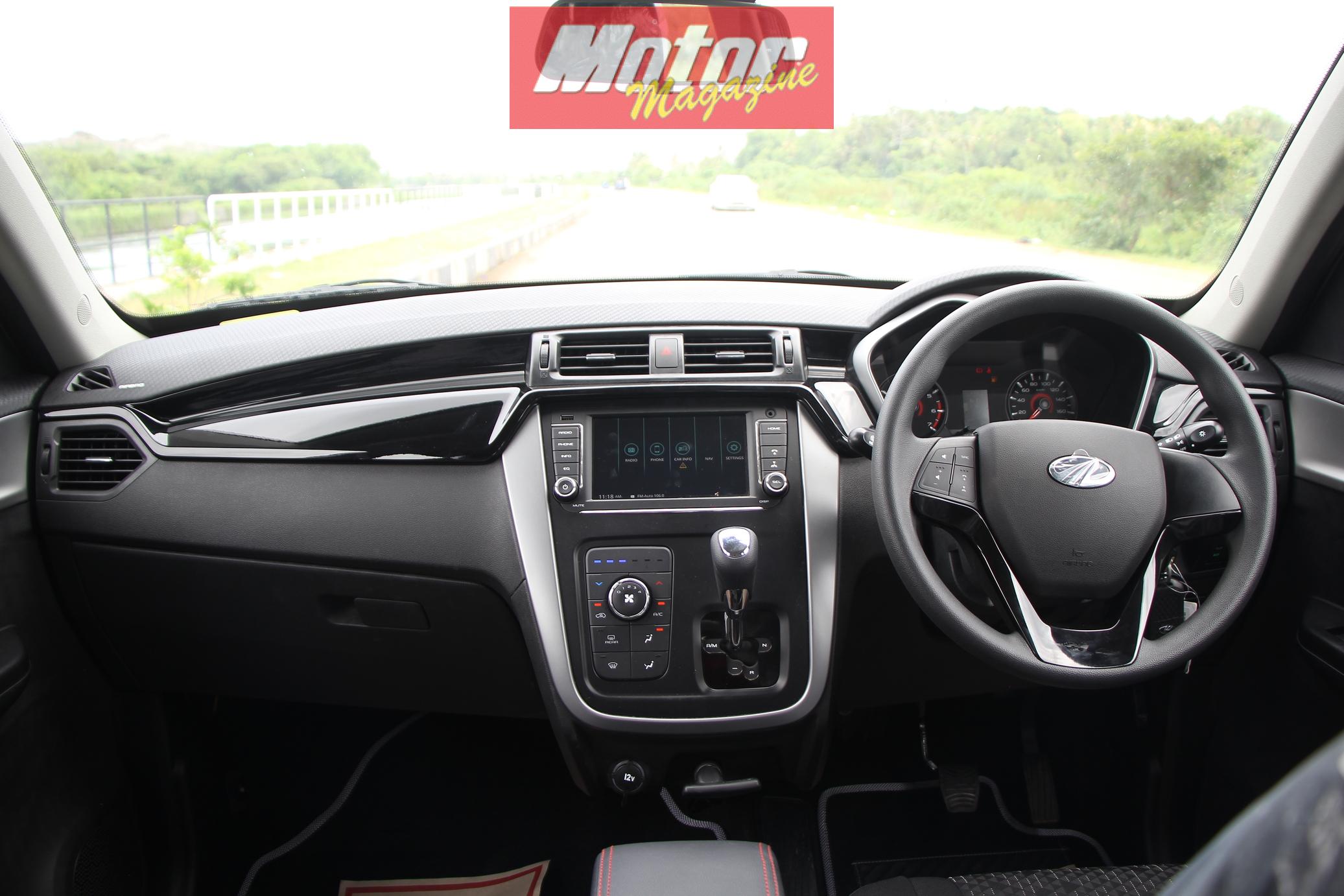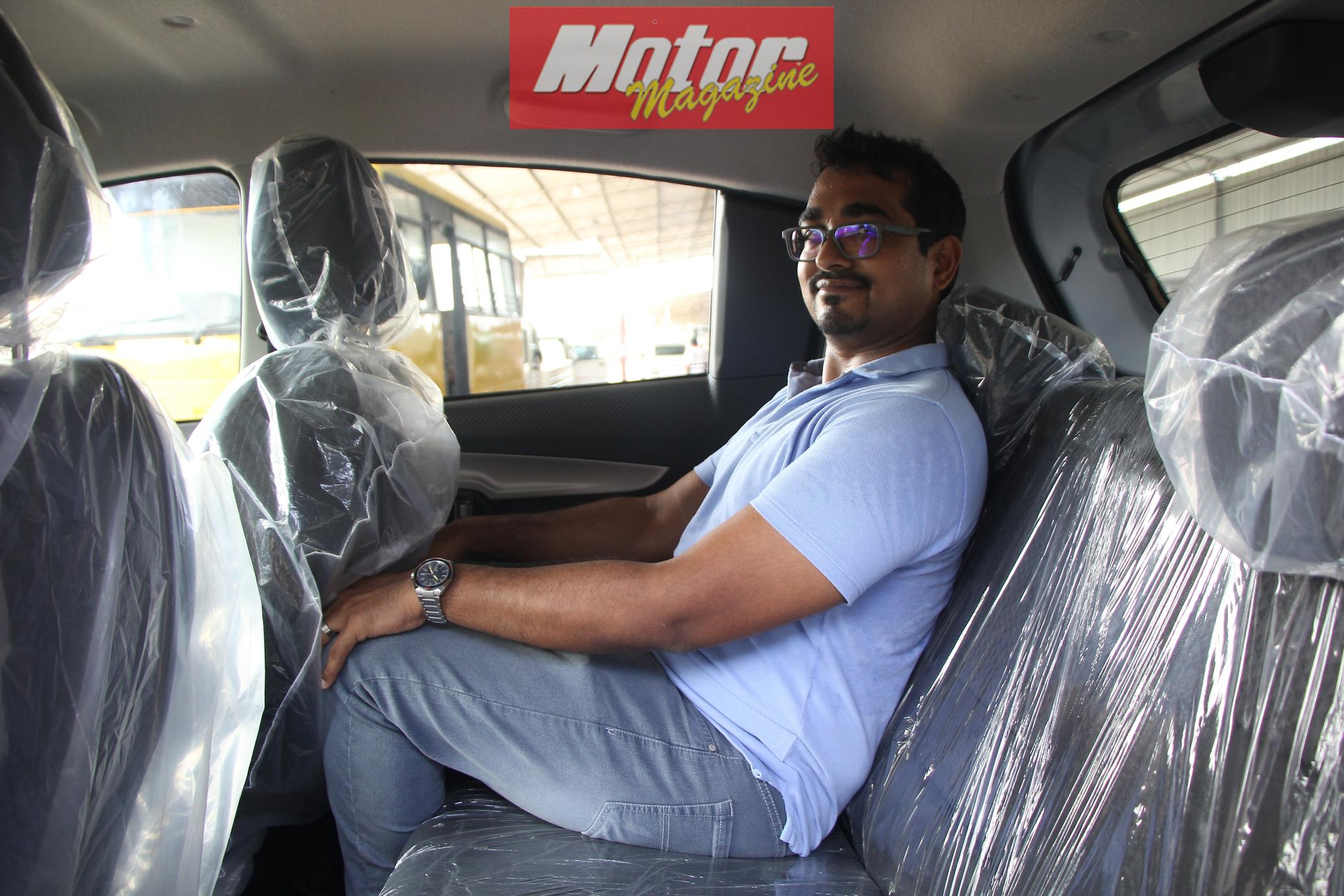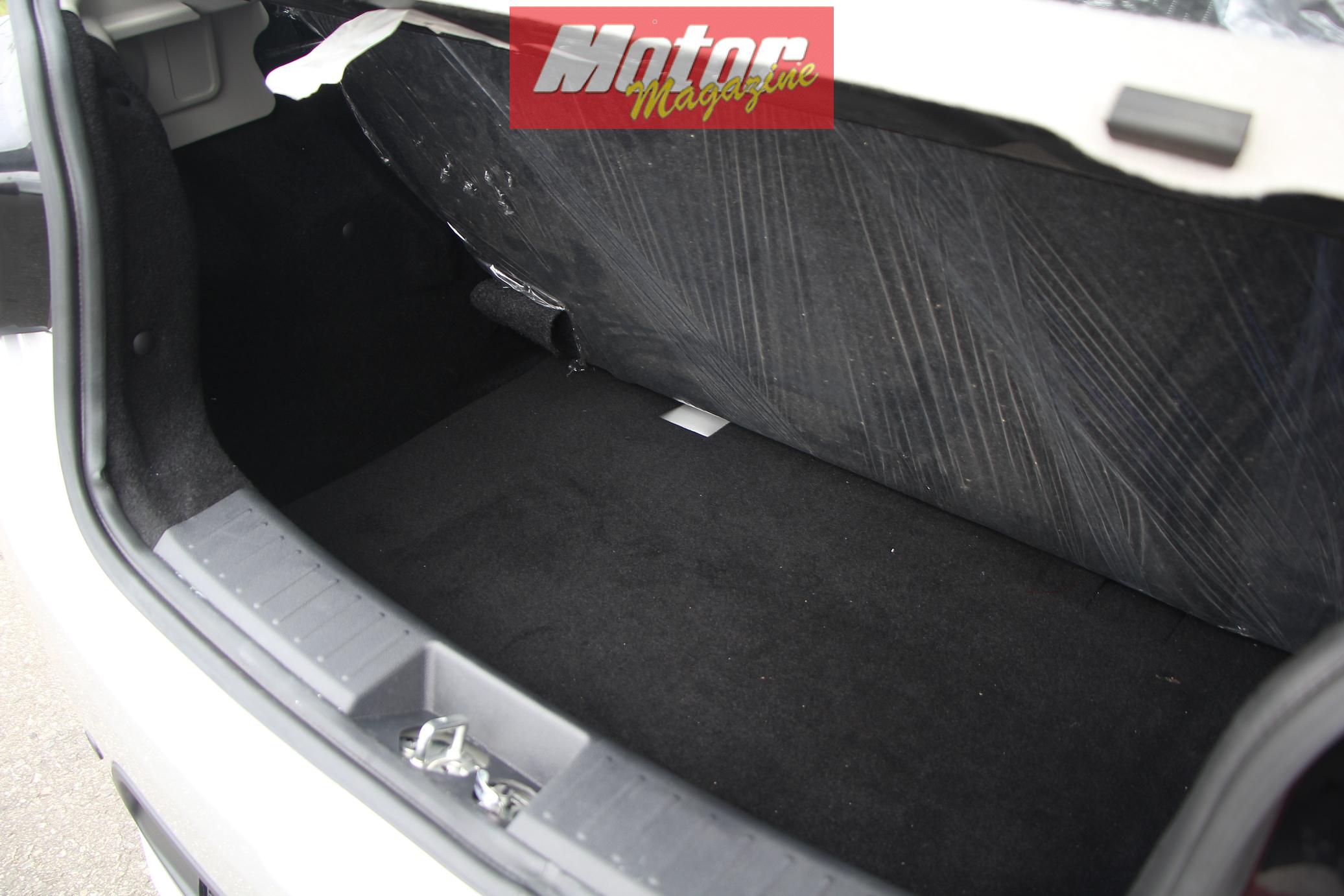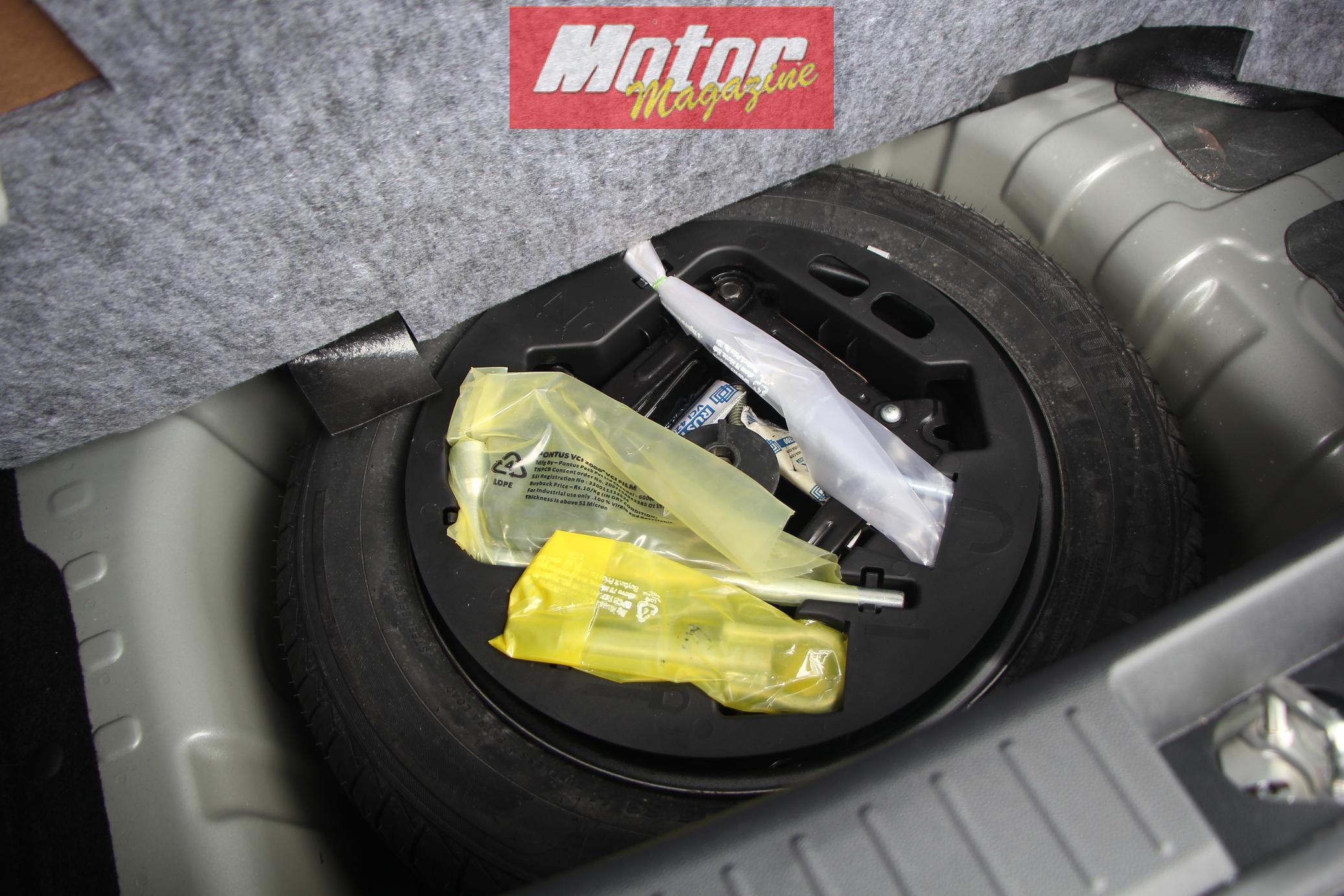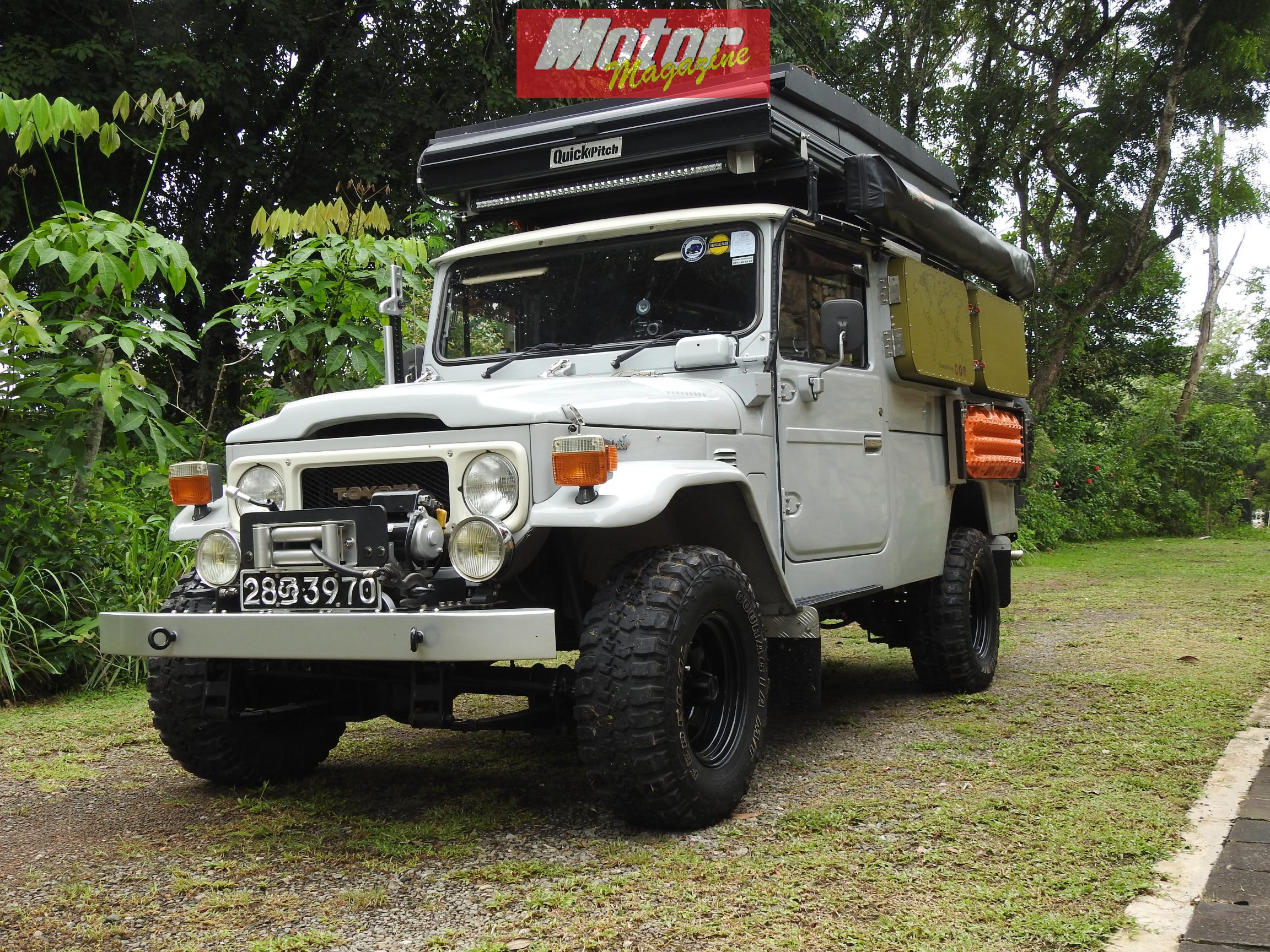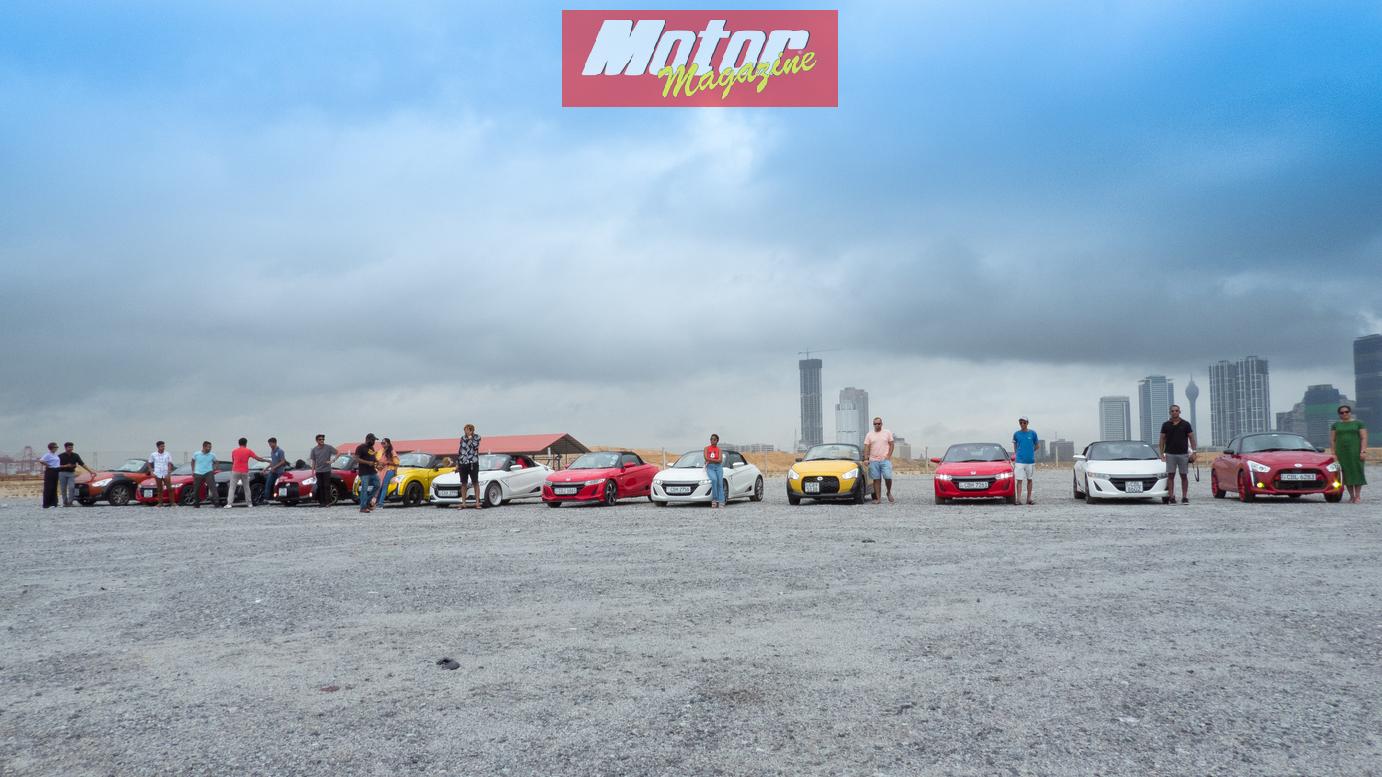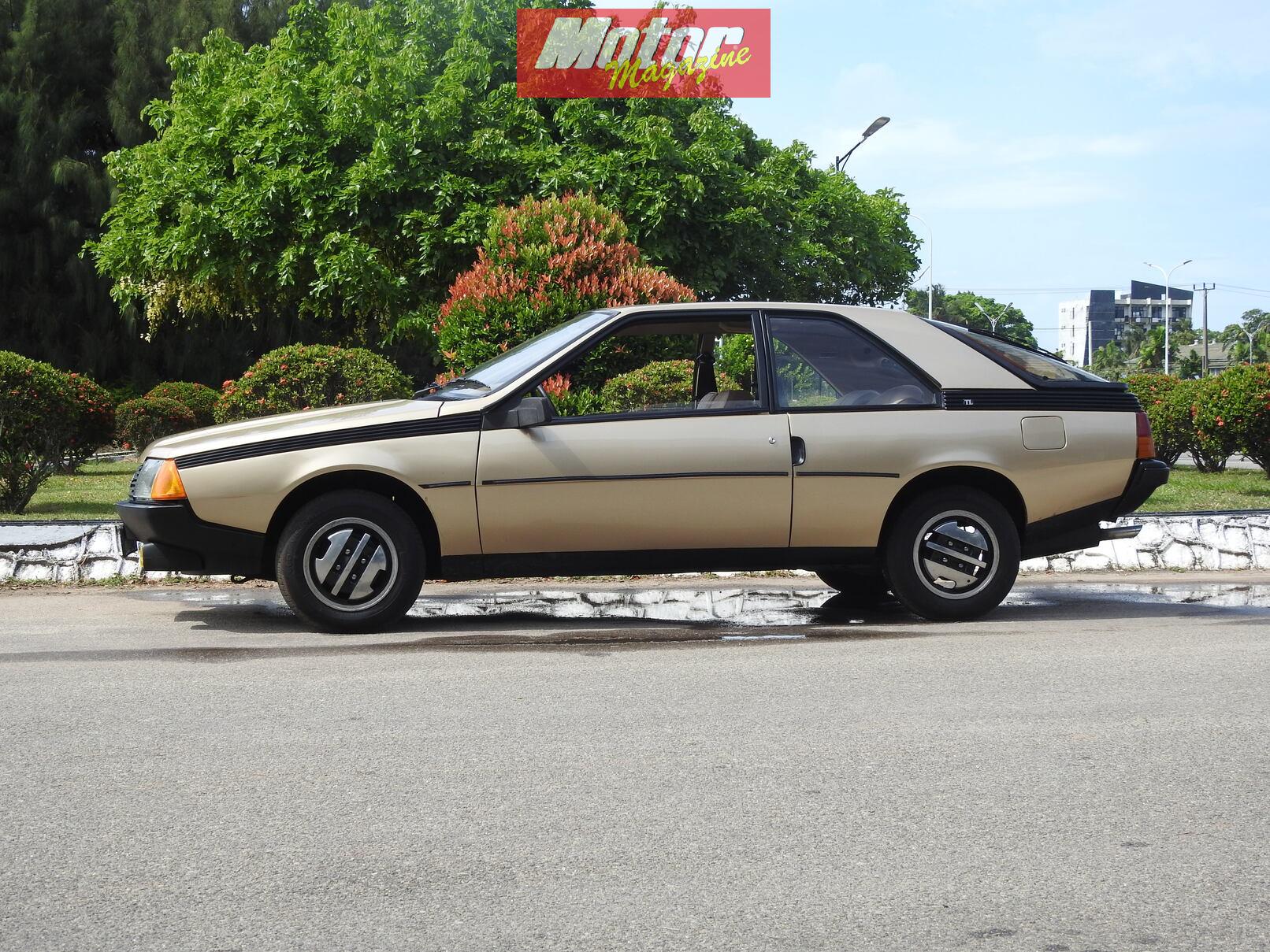Mahindra KUV100 D75 AMT
Mahindra’s locally-assembled compact gains a diesel engine and autobox

Published on 26 Sep 2023
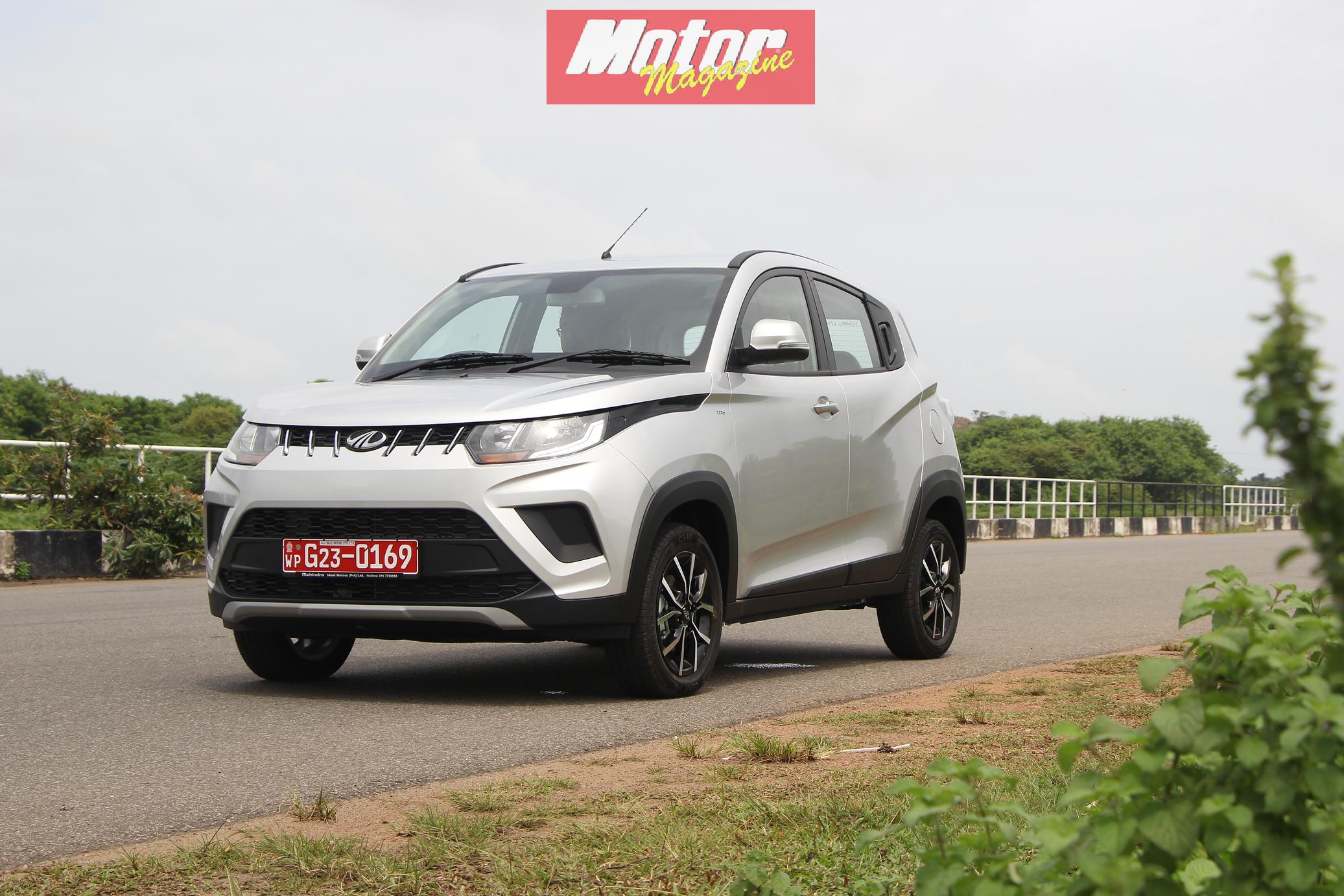
Over three years ago, we sampled the Mahindra KUV100, the first locally assembled vehicle to come out of Ideal Motors’ brand-spanking-new assembly facility in Mathugama, Kalutara District. The company had impressive plans for its facility, at least they did until the economic crisis hit everyone like a ton of bricks. While KUV100 sales were significantly down, the automotive import ban did help the company, as they now had the cheapest brand-new vehicle in the market. The term Brand-New went a long way with our car buying public and helped maintain sales figures, despite prices creeping up due to a free-falling US dollar.
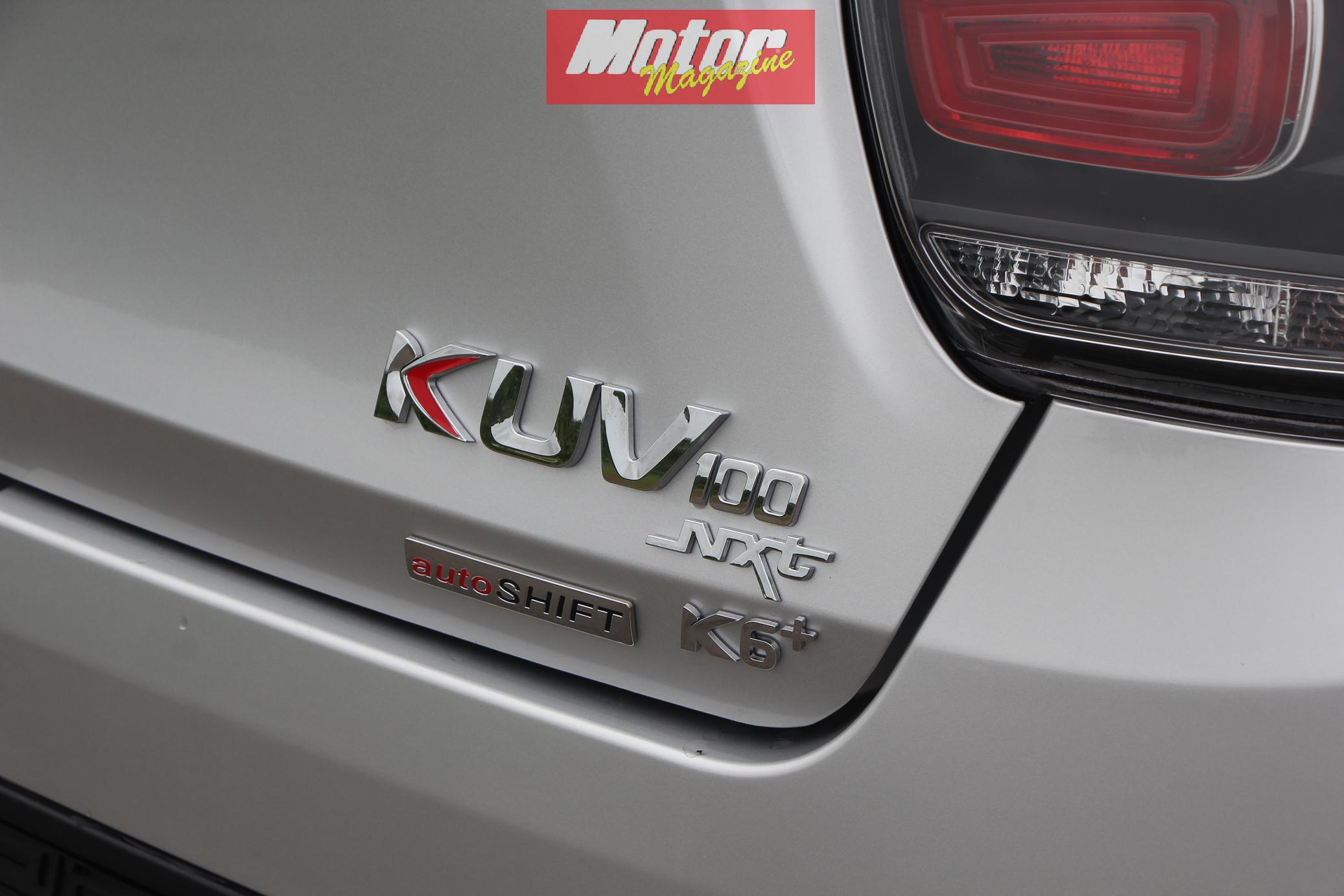
However, there remained a bugbear for some customers, and that was the manual transmission. Ideal did listen to customers and now offer a second variant called the D75. It’s got not only an AMT (Automated Manual Transmission), but a turbocharged diesel engine as well. Claimed to be powerful and fuel-efficient for the segment, that’s what we’re here to find out today. So, read on and discover all there is to know about the Mahindra KUV100 Diesel Automatic as people have started calling it.
Exterior
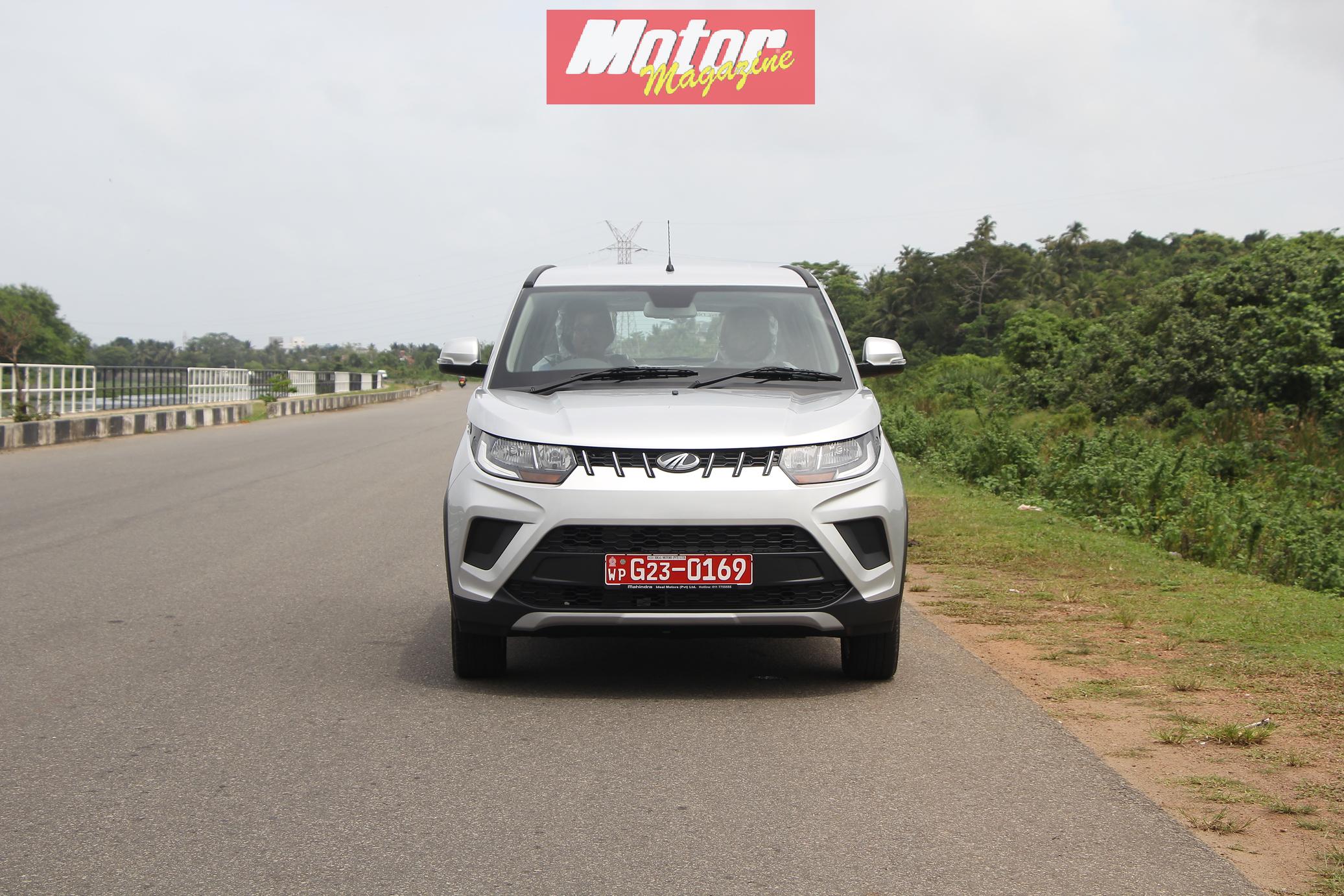
Dressed in Dazzling Silver and wearing a stylish set of 15-inch diamond-cut alloy wheels, the look of our test vehicle is largely unchanged from the petrol manual variant. Check out the August/September 2020 issue of Motor, where Editor-In-Chief Nimal Wimalasuriya lived with one for four days.
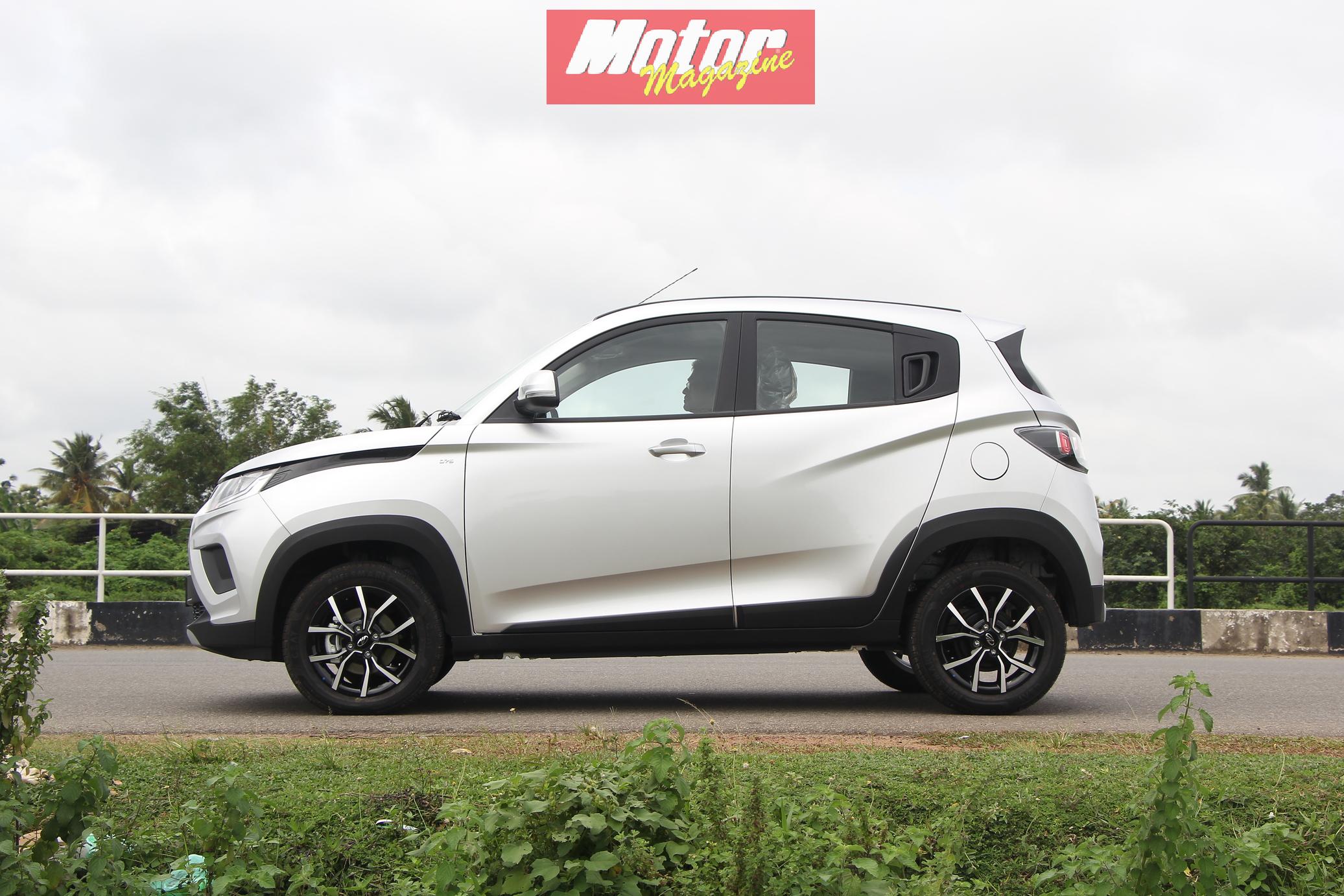
Visible differences between that car and this one to us are mainly in badging, with a D75 badge on the left front flank, and the rear right corner of the boot lid hosting an autoSHIFT badge. Yes, the KUV100 does look unconventional, but those stubby overhangs and tall-boy stance are all designed to endow it with functional abilities, of which we’ll tell you as we go along.
Mech & Tech
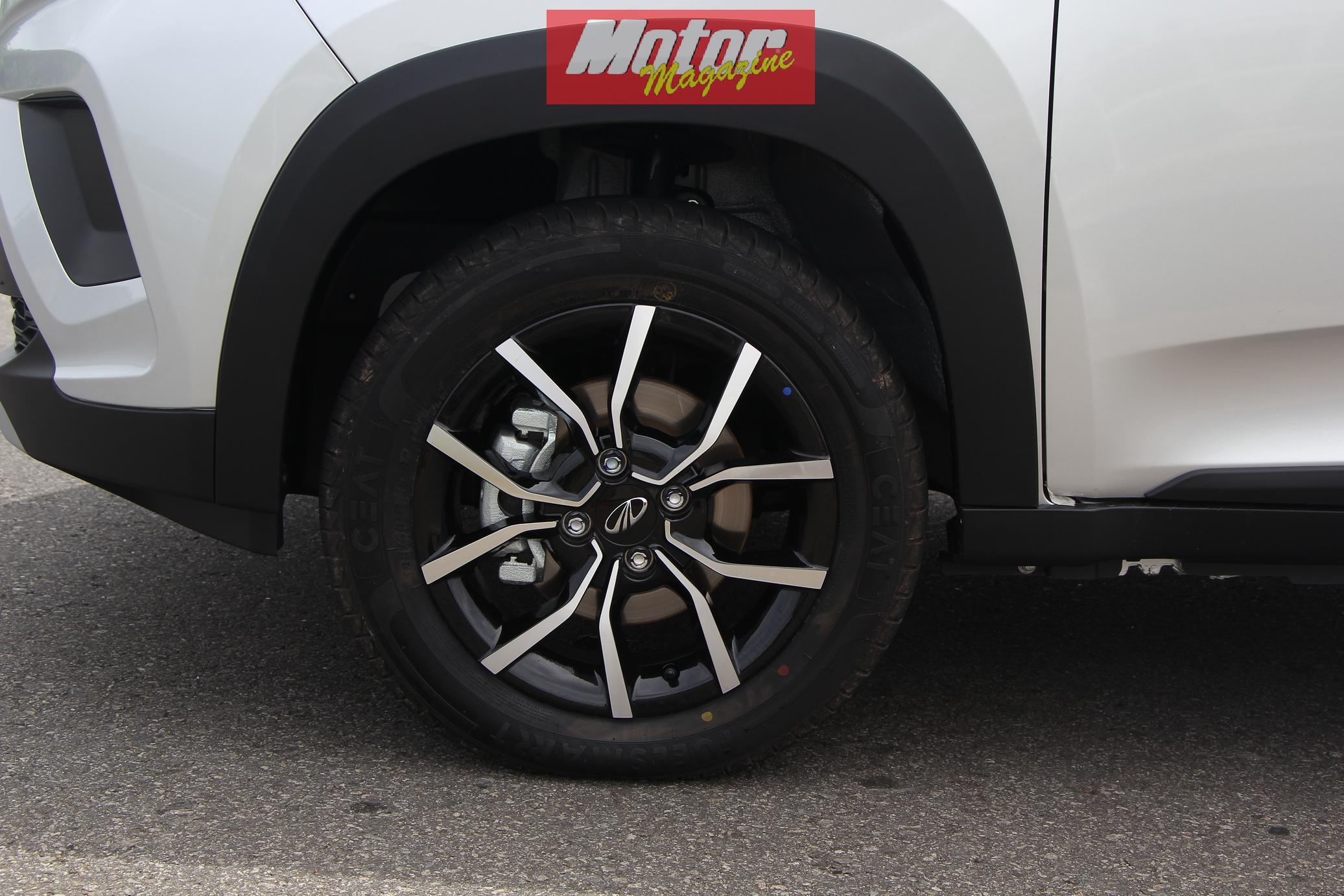
Let’s first get over the commonalities between this one and the petrol manual variant. Braking is done via front discs and rear drums, with ABS and EBD. The steering system utilizes an electric rack. You’ve got a MacPherson strut set-up at the front, and semi-independent torsion beam suspension at the rear. The front wheels are connected to the powertrain and do the driving, while the rear wheels are free to roll along for the ride (except when braking). All good thus far?
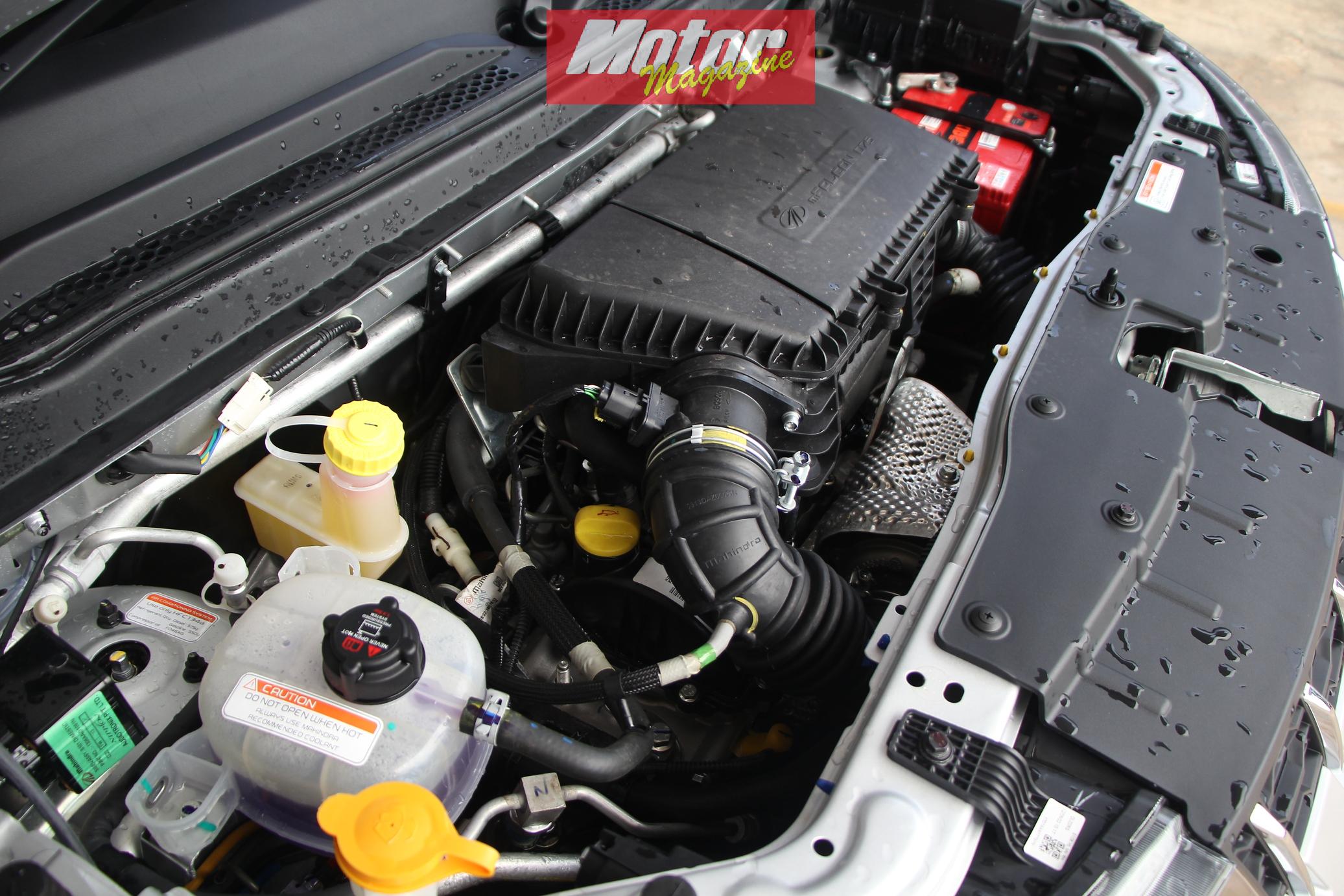
Now for the differences. First up, there’s a 1.2L 3-cylinder “mHawk” turbocharged direct injection diesel engine that develops 77hp at 3,750rpm, as well as 190Nm of twist between 1,750 and 2,750rpm. Next up, we find a five-speed AMT (Automated Manual Transmission), with a choice of manual or automatic shifting modes. An AMT is effectively a manual transmission with an automated clutch. Finally, there’s a mode selector that offers a choice of ECO or POWER mode.
Driving Experience
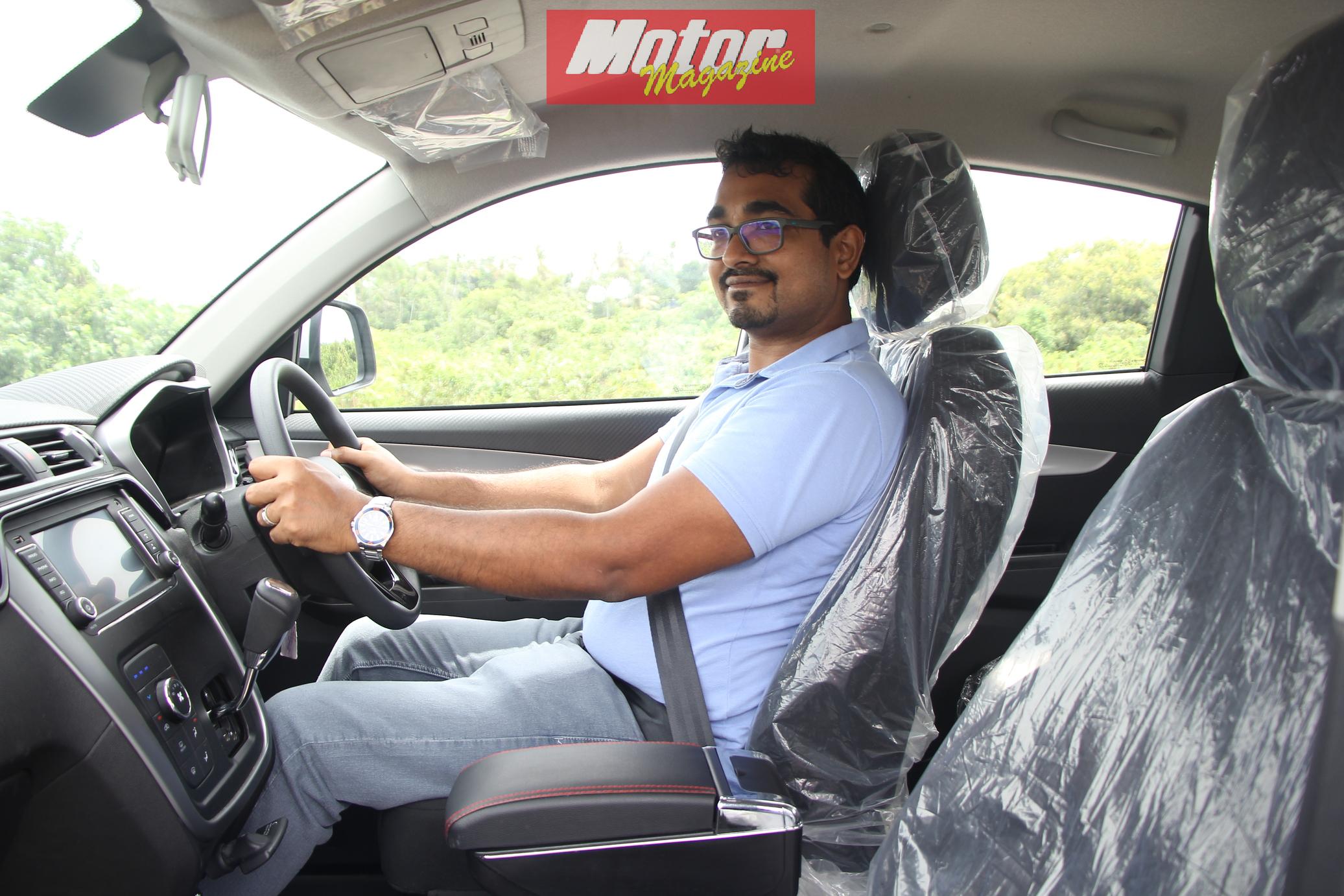
Settle into the driver’s seat that offers six-way manual adjustment (fore-aft, backrest angle and cushion height), and the interior is identical to the petrol manual variant. The centre console is the same, save for the AMT’s shift lever and pattern. Even the instrument cluster is the same, right down to the 5,500rpm redline on the rev counter that you’ll never be able to reach (because it’s a diesel, not a petrol). The only minor differences are the display of gear selection, and whether you’re in ECO or POWER mode, selected by a button down on the right-hand-side to the steering wheel. Crank the engine and…yes it’s a diesel. That unmistakable sound meets your ears the moment it fires up. However, it’s surprisingly muted. An exploratory rev reveals that it never intrudes into the cabin, and never got loud even during the hard driving portions of our test. You won’t need to raise your voice or adjust the radio volume if you’re pushing on.
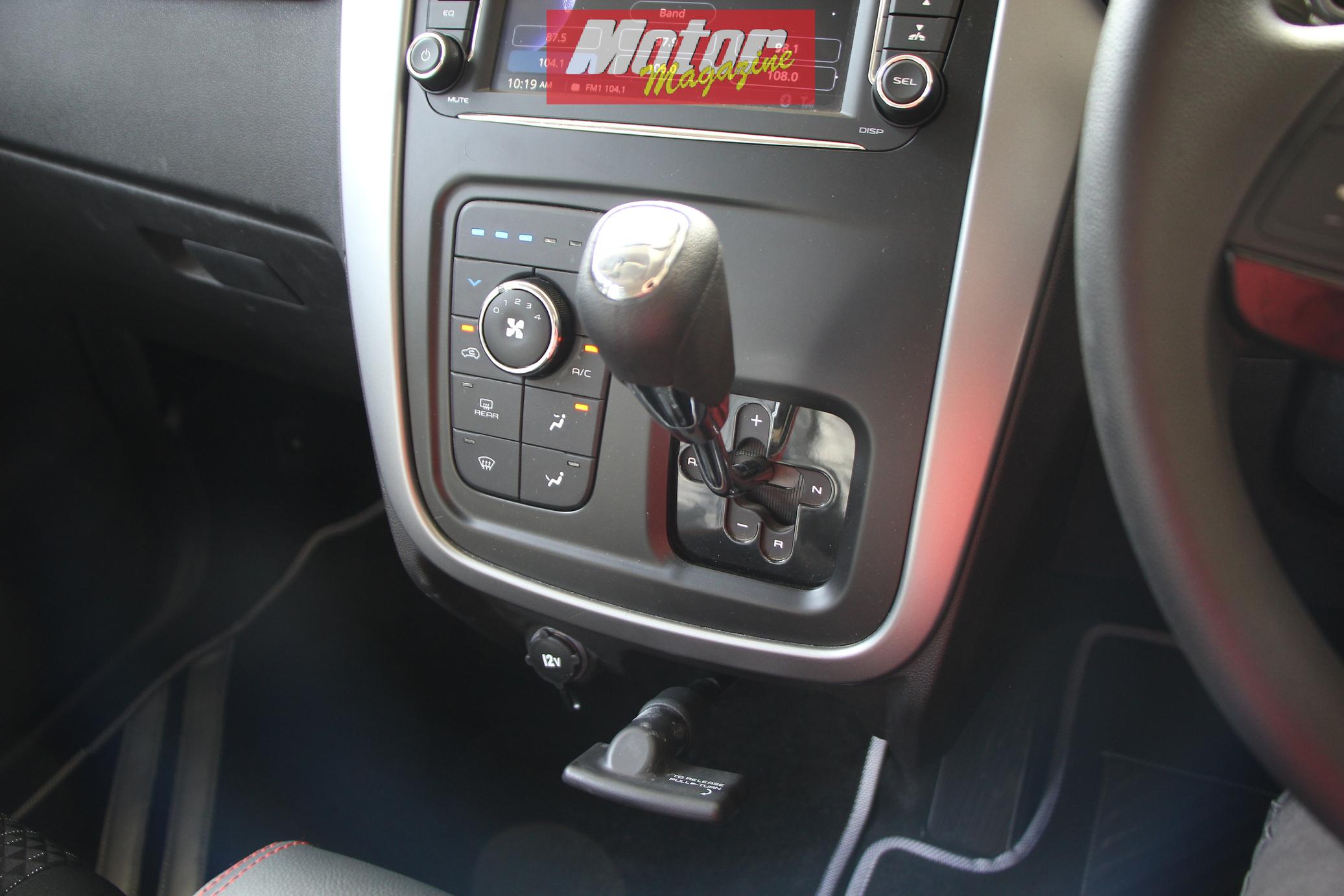
The AMT offers five positions – R,N,A/M, + and -. As it is electronic, it automatically defaults to N when you crank the engine, and you select automatic mode by moving it into A. Flick it into M (or into + or -) and you’ve selected manual mode. R is self-explanatory; if you don’t know what it means, you’ve got no business driving in the first place. The shifter has a pleasantly weighted action to it. Furthermore, you’ve got to have your foot on the brake to shift it into A/M or R from N. This means that if you’re parked and your kids decide to flick the shifter, nothing will happen unless they also press the brake pedal. Since there’s no P or Park position, you’ve got to rely on the handbrake to keep your KUV100 in place when parked. Foot off the brake, the clutch engages, and away we go. First impressions are that clutch engagement is positive, but not rushed. You don’t lurch away or shudder. Of course, if you’re in traffic up an include you’ve got to be smart in your brake-to-throttle transition, but that’s common across all AMTs. Under full throttle, the AMT maintains its positive but not rushed shifting nature, and that’s par for the course – this isn’t a sports car after all. Selecting ECO mode restricts part-throttle shifts to happening at 2,000rpm and is great for cruising in traffic. However, if you want more power, just push harder and the car takes off.
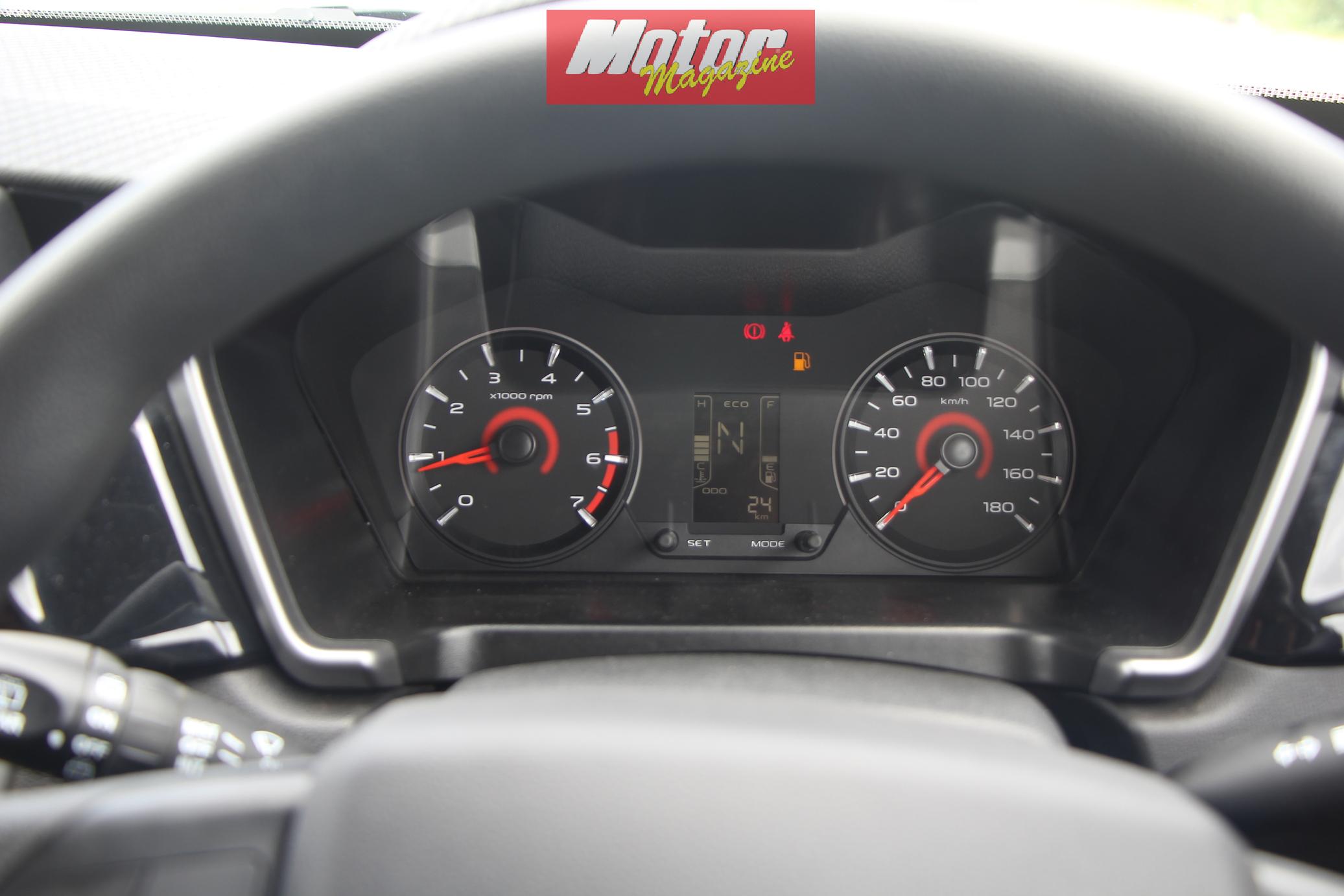
Power mode is where the KUV100 diesel AMT feels really peppy. You get a little kick in the back under full throttle, where the engine winds itself out to just over 4,000rpm before shifting up. There’s a distinctive behavioural change between POWER and ECO, and I suspect that there’s something more than just shift pattern changes going on. With 170mm of ground clearance and a ride geared towards the firmer end of the spectrum, potholes are mostly an afterthought, if you don’t mind a tad of jostling. The suspension seems supple and I didn’t detect excessive body roll under cornering, although I didn’t want to push this box-fresh unit too far. Braking is a similarly competent affair, where you can bring the KUV100 to a stop as quickly as possible with little drama.
Living with the KUV100
What can I say…it’s identical to the petrol manual variant in terms of living with. You’ve got space for up to five occupants and ample headroom thanks to its tallboy stance. The AC chills impressively – I’ve talked about how the Indians have mastered automotive air conditioning to a degree that even the Japanese and Europeans can only dream about – and offers an electronic control system although it’s not a fully automatic climate control. You’ve also got a heater for when you’re venturing upcountry and things get a tad chilly.
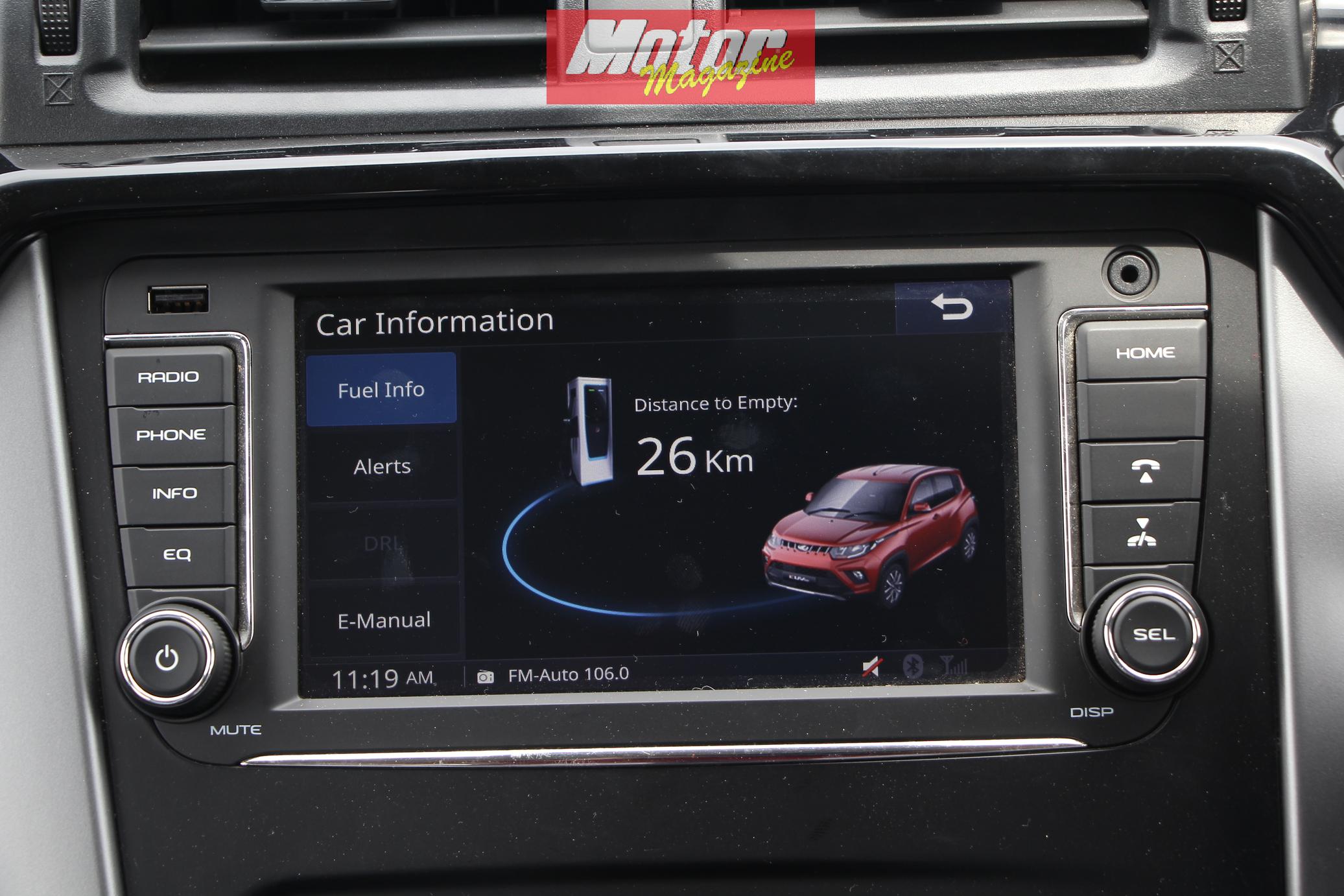
The 7-inch infotainment system offers a choice of radio,
Bluetooth, AUX and USB connectivity and plays through a six-speaker system
encompassing two A-pillar mounted tweeters and four full-range speakers, one in
each door. You’ve also got some audio and phone controls on the steering wheel.
Furthermore, while our petrol manual tester from 2020 didn’t have a reverse
camera, this car does, and it’s got impressive resolution for a budget vehicle.
The boot measures in at 243 litres, but if you flat-fold
the rear seats, you’ll get 473 litres. However the loading lip is high, so bear
that in mind. Beneath the boot floor is a full-size spare wheel and tyre
changing kit which is excellent compared to the compressor and filler can
solution that most cars come with nowadays. Other features of note include rear
wiper with rear washer, 1-liter bottle holders in all doors, a locally-fitted
front console box arm rest, LED interior lamp, headlight height adjuster,
sunglass holder in the roof, vanity mirror for the passenger side, central
locking, power windows, power mirrors and automatic central locking at 20km/h.
Safety
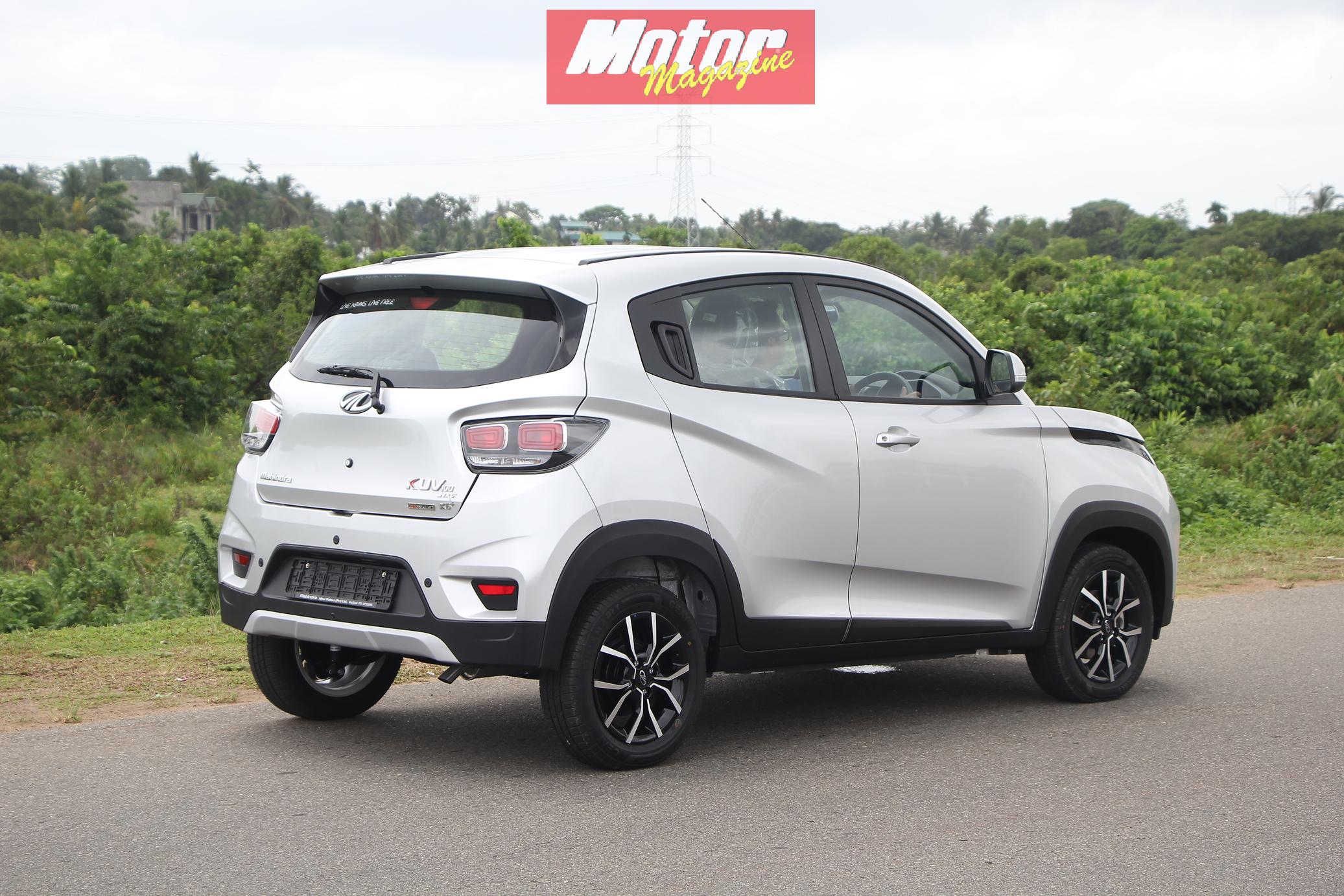
The standard safety kit on this diesel AMT variant is identical to the petrol manual. Hence, you’ve got dual airbags, ABS, EBD, front seatbelt pre-tensioners, rear door child safety locks, anti-theft alarm, automatic hazard light activation under hard braking, and ISOFIX child seat mounts at the rear.
Fuel Economy & Price
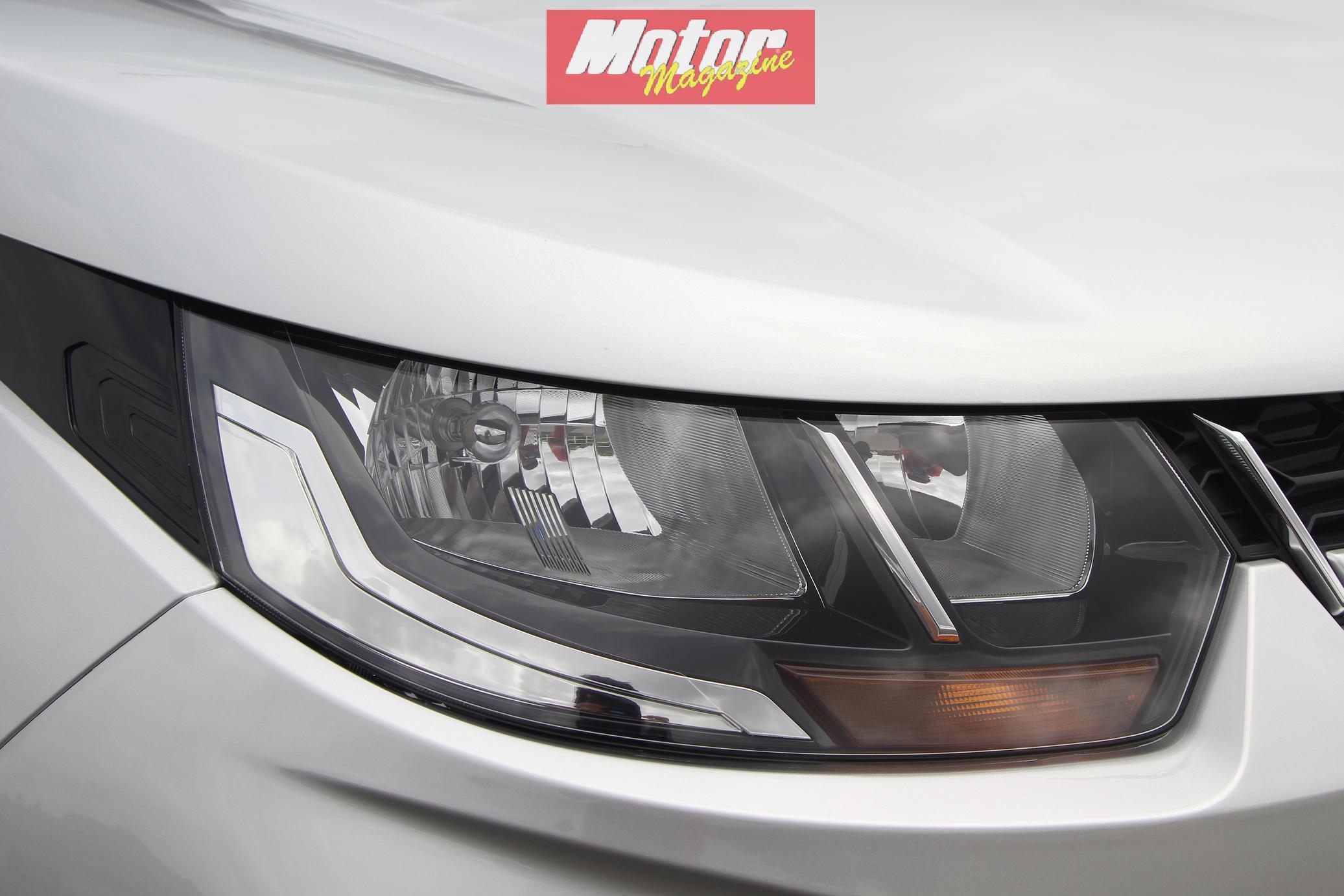
Fuel economy is said to be around 12-13km/l in city, and one can easily crack 18km/l on outstation and highway jaunts. We didn’t have a chance to test fuel figures on our relatively short test, but this seems about right. Lead-footed drivers in heavy traffic may see lower figures, while those who are calmer and more efficient drivers and avoid peak traffic times will reap more rewards. Remember that fuel economy is a major reason why people pick diesel vehicles. The price of the KUV100 D75 diesel automatic variant is Rs. 6,995,000 at the time of writing, and includes a 3 year / 100,000km warranty.
Final Words
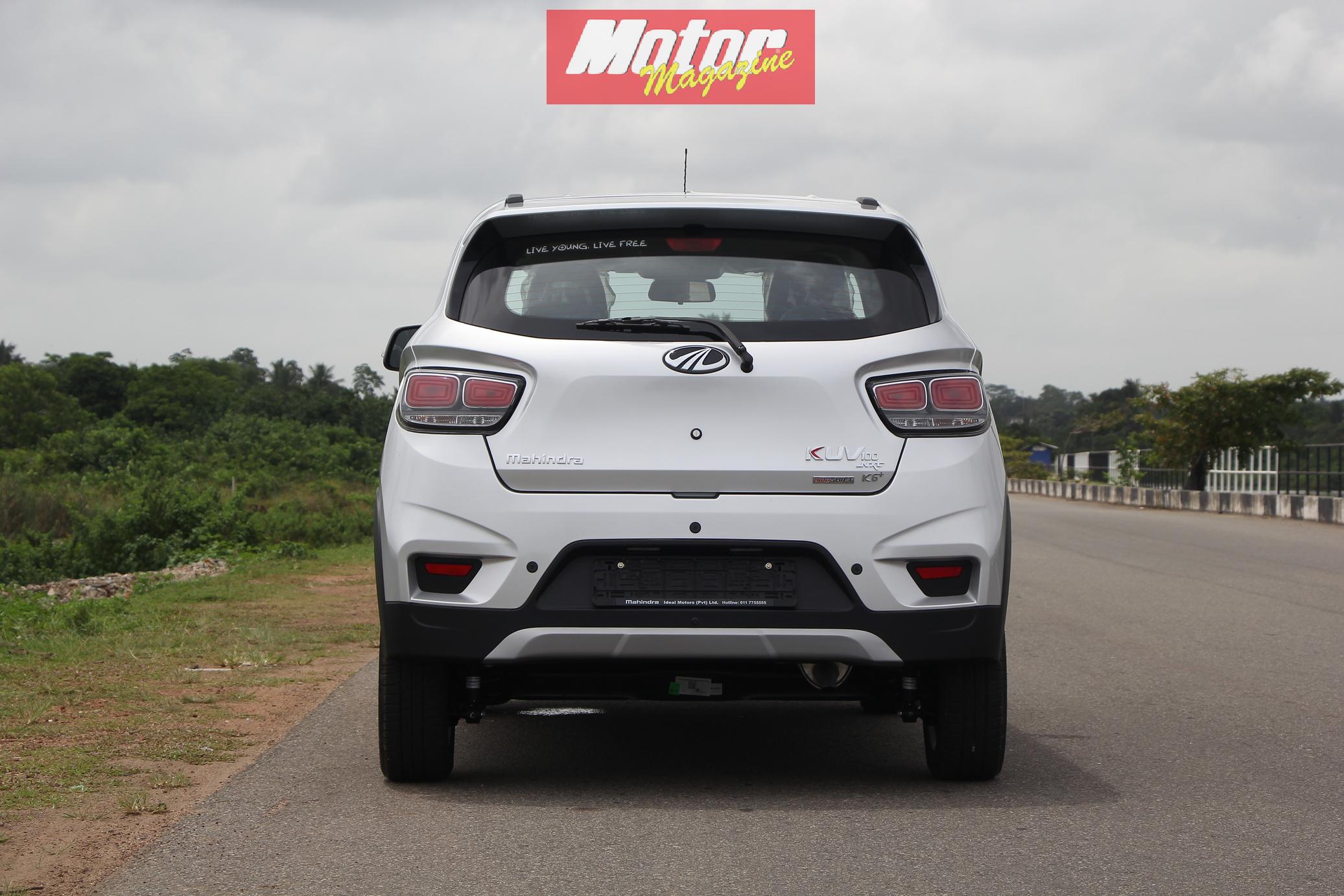
If you’re looking for a brand-new compact family vehicle, the KUV100 is one of a very slim option list that you can pick from. The petrol is a fine vehicle with a manual transmission, while this diesel variant seems better suited for the AMT, which is one of the better AMTs that I’ve tested. We came away impressed with its perky nature and how grown-up it seems, a testament to local assembly activities getting better and better. There’s also a limited-edition variant with some special interior finishes, as well as a larger infotainment screen that we caught sight of in the warehouse, as well as a few options to pick from, so you can customize your KUV100 to a certain degree.



